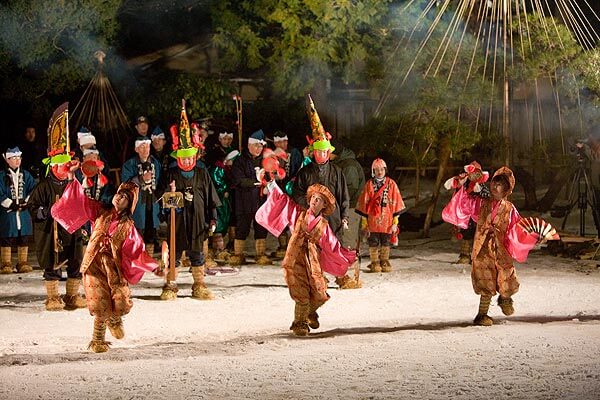1) What is Enburi?
Designated as an National Important Intangible Folk Cultural Property, the “Hachinohe Enburi” is a local dance performance expressing prayers for a good harvest. The dance is said to take its name from a farm tool called “eburi” (or “iburi/yusaburi”), which makes flattens the ground. It is a ritual for shaking the gods of the fields to wake them up and to put the people’s spirits into the earth.
The dancers, called Tayu, wear large, brilliantly-ornamented eboshi hats in the shape of horses’ heads. Enburi’s most unique and distinctive feature is these hats and the way the dancers wearing them shake their heads around in wide arcs. The dance expresses the entire set of actions involved in rice cultivation, including sowing seeds and planting seedlings.
Between the dances of the Tayu, adorable performances of Shukufukumai dances by children are presented for the audience to enjoy.
2) What are the Origins of Hachinohe’s Enburi Festival?
There are several opinions, including legends, about how Enburi started. However, the commonly-accepted theory is that it began during the Kamakura era when Mitsuyuki Nanbu, the founder of the Nanbu clan, came to the Oshu area. At the first New Year after Mitsuyuki’s arrival in Oshu, the commotion among his drunken retainers became a boisterous sword dance. A farmer named Tokuro, hearing their quick wit, excitedly began singing a rice-planting song and then, farm tools in hand started dancing. This incident is said to be the origin of Enburi.
3) What are the Different Types of Enburi?
Naga-enburi
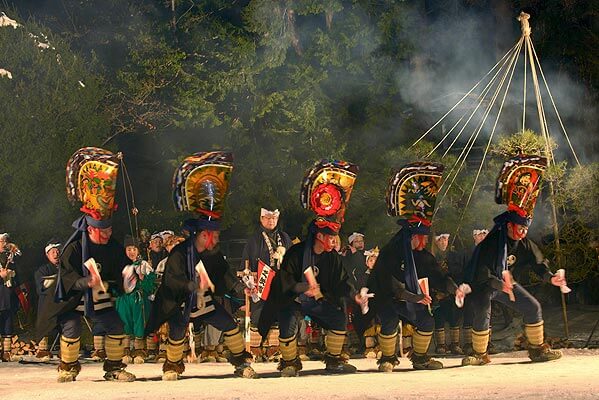
Naga-enburi is a graceful dance featuring slow singing and slow gestures. The Tayu dancers with Tokuro (their leader) sport eboshi headdresses, which play a major role in the dance, with bright red peonies attached to them. The dancers hold kandai (hoe handles) while they dance.
Dosai-enburi
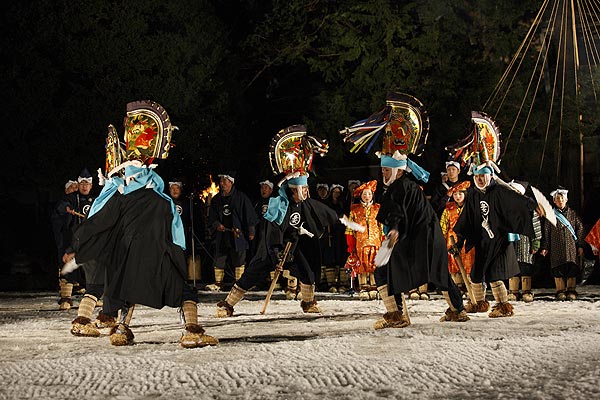
In contrast to naga-enburi, dosai-enburi is a bold, magnificent dance in which both the songs and the gestures have a fast tempo. Dosai-enburi features dancers carrying sticks called jangi, which have metal fittings attached.
4) What Does a Typical Enburi Troupe Consist of?
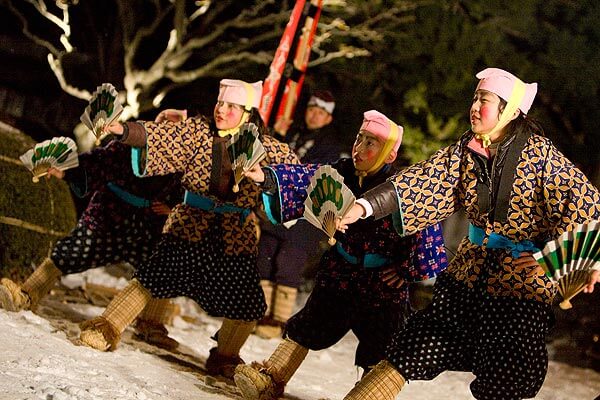
Enburi groups consist of a supervisor, Tayu dancers, dancing children, musicians, etc. for a total of 20-30 people. The Tayu dancers take the main role in Enburi, with their leader, called Tokuro, at the front.
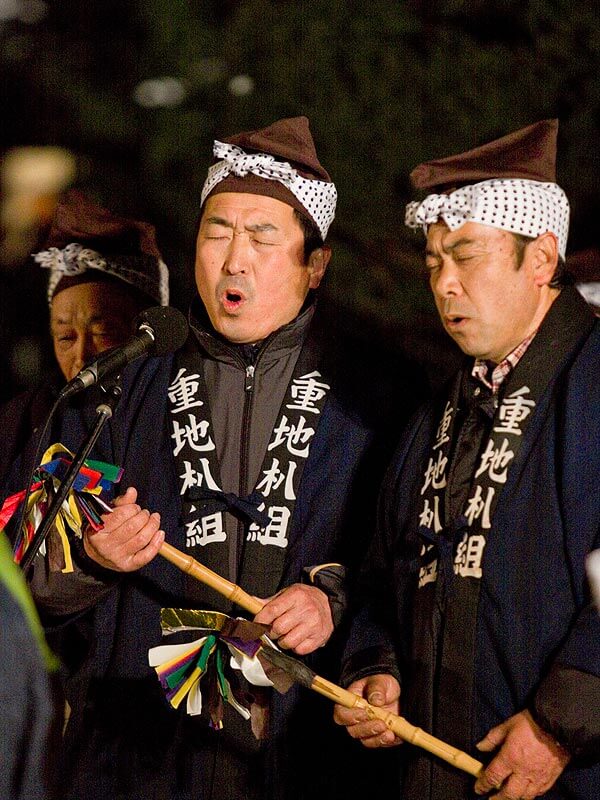
5) What does ‘Enburi’ mean? Where does the word come from?
The action of the Enburi dance is called “suru”. The farm implement called “eburi” is used to flatten the soil of the rice fields, an action known as “suru”. Thus the Enburi dance performed while holding this tool is also called “suru”.
In the Enburi suri dance, Tayu dancers wearing eboshi headdresses resembling horses’ heads perform dances showing the processes of rice cultivation, from sowing seeds to reaping the harvest.
6) What Happens During an Enburi Dance?
Surikomi
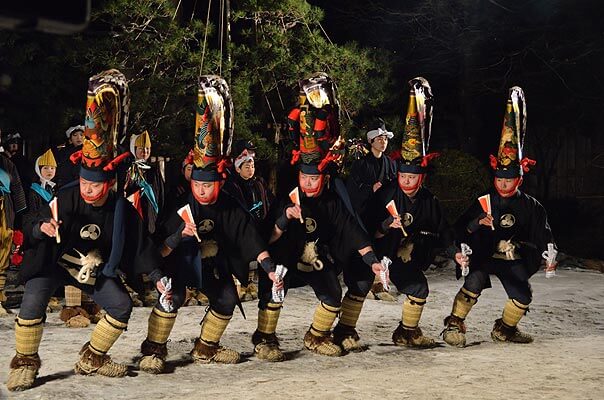
The Tayu leader Tokuro announces the beginning of the Enburi as the dancers enter.
Suri-hajime
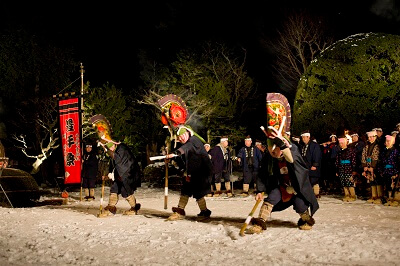
Beginning with a song celebrating the start of the year, the suri dance shows the sowing of seeds in the rice nursery and the plowing of the rice fields by horse in preparation for planting seedlings. All the Tayu dancers in “dosai-enburi” perform the same gestures, while in “naga-enburi” Tokouro the leader and the Tayu dancers make different movements.
Naka-no-Suri
This dance depicts the seedlings being planted in the rice fields.
Suri-osame
This dance depicts the planting of seedlings being safely completed. When the work is done, everyone prays for a good harvest in the autumn.
Kurodome
The Enburi ends with a recitation of the words of the “kurodome” spell, to ensure that the raised footpaths (“kuro”) between the rice fields keep the precious water from leaking out.
7) What are the other dances that are performed during Enburi?
Shukufugei are charming dances to bring good luck, performed in the intervals between the Enburi suri dances. The audience enjoys these adorable children’s dances.
Enko Enko
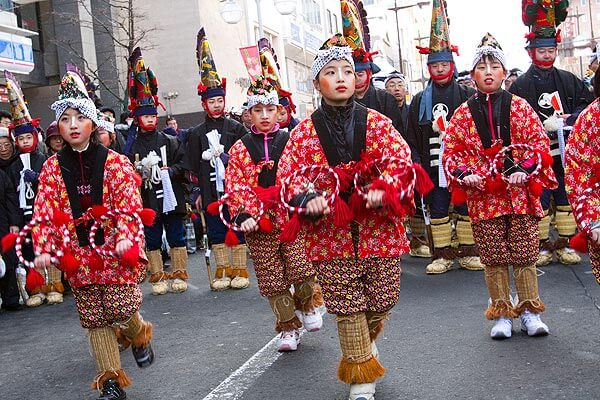
“Enko Enko” is a dance performed with zenidaiko drums to which coins are attached, to the tune of a ballad called “Kane-no-naru-ki” (The Money Tree).
Matsu-no-mai
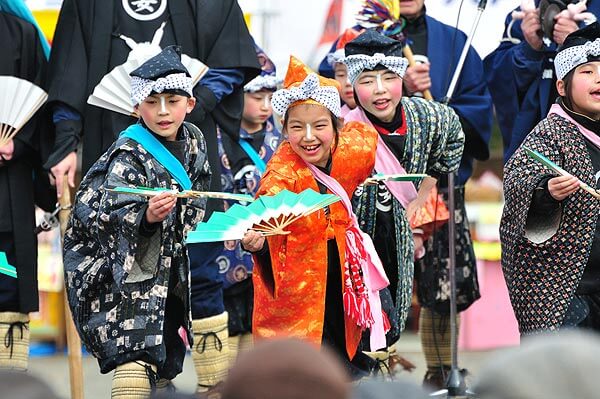
Matsu-no-mai is said to come from people dancing with pine branches while taking a break from working in the fields. is performed by children.
Ebisu-mai
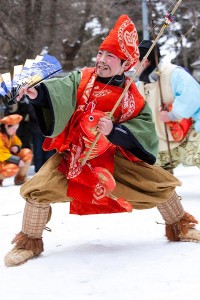
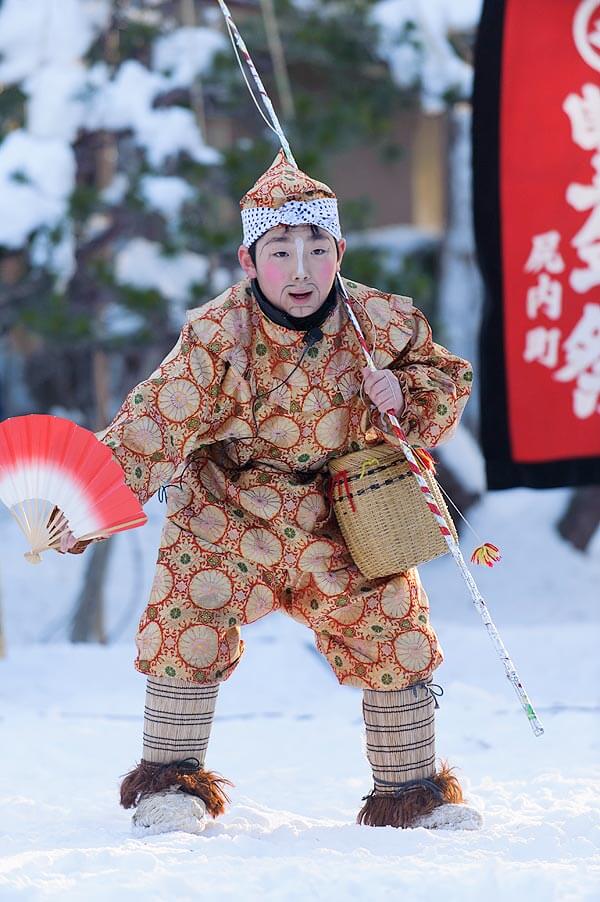
In Ebisu-mai, children use fishing poles and fans to conjure the image of the god Ebisu fishing for sea bream. It is an auspicious dance in which, when the dancers finally catch the fish, they dedicate it to the master of the house so that the family may become wealthy.
Daikoku-mai
In the Daikoku-mai dance, children dance accompanied by auspicious announcements and songs while holding a small mallet-like shaker in their right hand and a fan in their left.
